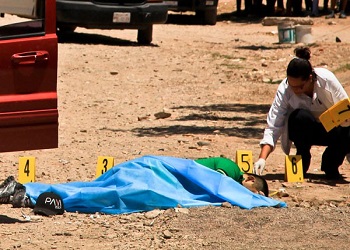Mexico’s latest official homicide figures indicate a significant increase in murders, a trend likely related in large part to shifting criminal dynamics in the country.
Mexico’s federal government on February 20 published the latest data concerning recorded crimes in 2016 and January 2017. The compilation of homicide figures show that the country suffered 20,792 homicides in 2016, the highest number since 2012.
Moreover, authorities recorded 1,938 homicides during January 2017, making it the most violent first month of the year since January 1997, the earliest year for which government data is available. In addition, January 2017 marks the seventh month in a row that witnessed over 1,800 homicides.
The data also shows that homicide figures rose steadily throughout 2016. The number of murders in August and September 2016 spiked to just under 2,000 each month, making those the deadliest months in Mexico since December 2012 when President Enrique Peña Nieto took office.
InSight Crime Analysis
The trend of rising homicides is a strong indication of the deteriorating security situation in Mexico. Given the recurrent evidence of organized crime’s subtantial responsibility for insecurity in violent areas, as well as recent reports arguing that criminal structures are responsible for over half of murders in Mexico, the latest trends represented in the official data are likely the result of ongoing shifts in the underworld.
This dynamic was illustrated early in 2017 by the state of Quintana Roo, whose coastal tourist area witnessed attacks in January that struck the state prosecutor’s office in Cancún leaving four dead and a bar in Playa del Carmen where a shootout killed five. As InSight Crime argued at the time, these incidents appeared to be the result of shifting criminal alliances and an evolution in the presence of criminal groups in the area.
The same two towns provided further examples of the deteriorating situation the following month. Three individuals were executed and a dismembered body was found in several body bags over a 24-hour span in Cancún, Proceso reported on February 20. These murderous incidents had been preceded by the discovery of two bodies, including one in a suitcase deposited in front of Cancún’s prosecutorial offices — the same offices that had suffered the deadly January attack.
SEE ALSO: Mexico News and Profile
These tourist towns serve as an illustration of broader trends of shifting power relations between cartels and evolving criminal dynamics across the country. As InSight Crime previously explained, Mexico’s ongoing — yet flawed — militarized approach to combating organized crime has an inherently territorial component that can lead criminal groups to adapt their presence in response to military deployment.
Moreover, the government’s policy of taking down heads of criminal organizations can stimulate internal fighting within a cartel, which in turn often has a direct impact on public security in concerned areas. Over time, successful government action against a specific cartel can also impact the power balance between rival groups, leading to increases in violence as up-and-coming organizations challenge traditional power brokers for control.

